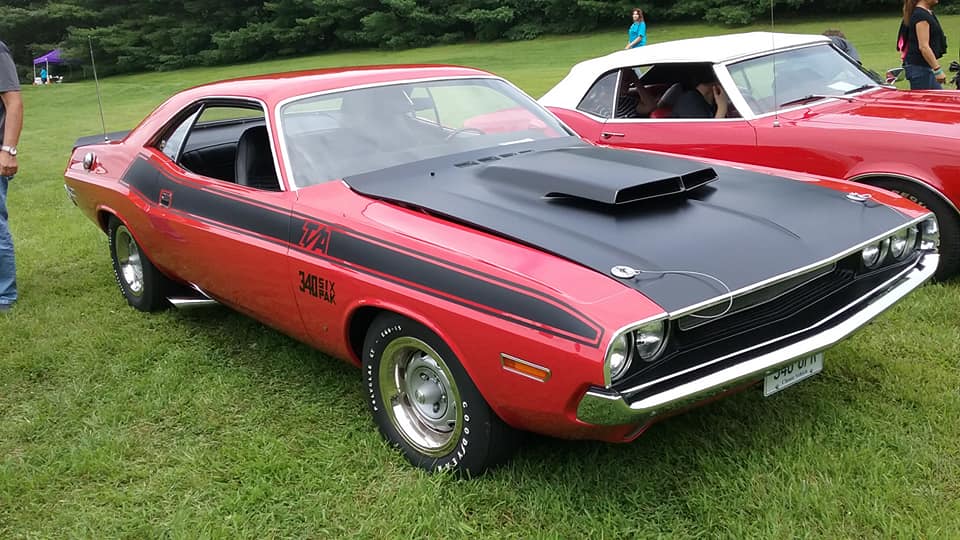Car: Dodge Challenger T/A 340 Six-Pak Coupe
Year: 1970
What makes it special: Introduced in fall 1969 for the 1970 model year, Challenger was one of two Chrysler E-Body cars, the other being Plymouth’s slightly smaller Barracuda. Positioned to compete against Mercury’s Cougar and Pontiac’s Firebird in the upper end of the Pony Car market, it was a late response to Ford’s Mustang which debuted in April 1964. Chrysler intended the new Challenger as the most potent pony car ever, and like the less expensive Barracuda, it was available in a staggering number of trim and option levels, and with virtually every engine in Chrysler’s inventory.
What made it famous: A special model only available for the 1970 model year was the Dodge Challenger T/A(Trans Am) racing homologation car. In order to race in the Sports Car Club of America’s Trans American Sedan Championship Trans-Am, Dodge built a street version of its race car just like Plymouth with its ‘Cuda AAR which it called the Dodge Challenger T/A Trans Am. Although the race cars ran a de-stroked version of the 340, street versions took the 340 and added a trio of 2-barrel carburetors atop an aluminum intake manifold, creating the 340 Six Pack. Dodge rated the 340 Six Pack at 290 bhp, only 15 bhp more than the original 340 engine (which also had the same rating as the Camaro Z/28 and Ford Boss 302 Mustang. It breathed air through a suitcase-sized air scoop molded into the pinned down, hinged matte-black fiberglass hood. Low-restriction dual exhaust ran to the stock muffler location, then reversed direction to exit in chrome tipped “megaphone” outlets in front of the rear wheels. Options included a TorqueFlite automatic or pistol-grip Hurst-shifted 4-speed transmission, 3.55:1 or 3.90:1 gears, as well as manual or power steering. Front disc brakes were standard. The special Rallye suspension used heavy duty parts and increased the rate of the rear springs. The T/A was one of the first U.S. muscle car to fit different size tires front and rear: E60x15 Goodyear Polyglas in the front, and G60x15 on the rear axle. The modified chamber elevated the tail enough to clear the rear tires and its side exhaust outlets. Thick dual side stripes, bold ID graphics, a fiberglass ducktail rear spoiler, and a fiberglass front spoiler were also included. The interior was identical to other Challengers.
Why I would want one: Going back to my “go-to” reason is that it’s a variant of the Challenger. Not as many T/A’s as there are R/T’s, so if you want something a little “extra special,” this is one way to go.
Fun fact: The “Western Sport Special” was a version available only to west coast dealers. It came with a rear-exit exhaust system and Western Sport Special identification on the rear decklid. Some examples came with a vacuum-operated trunk release. Another late production version was the low-priced “Deputy”, stripped of some of the base car’s trim and with fixed rear side glass.
